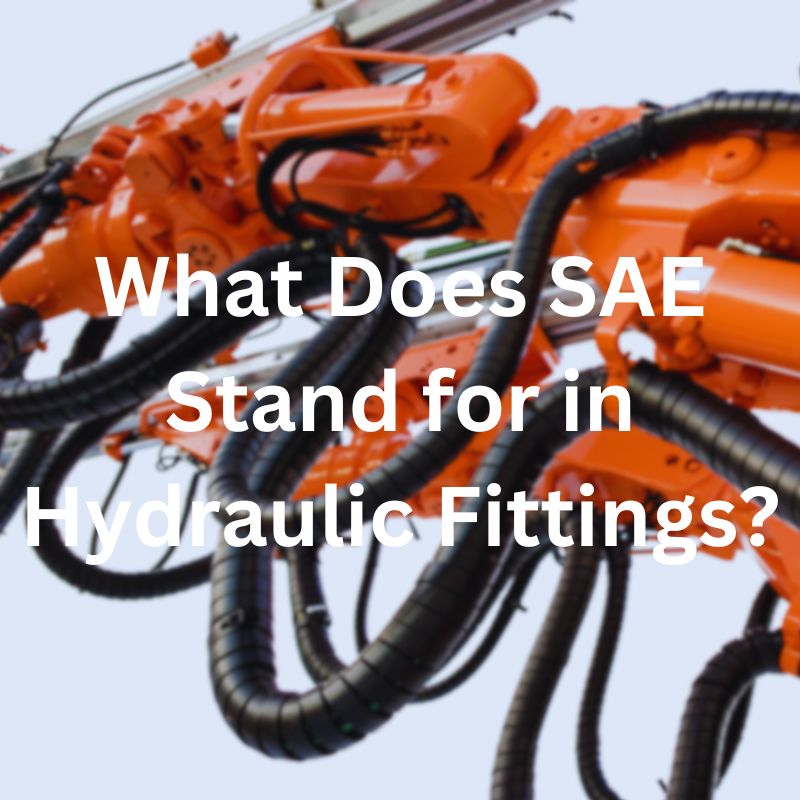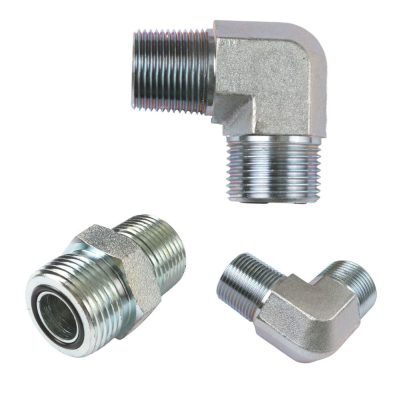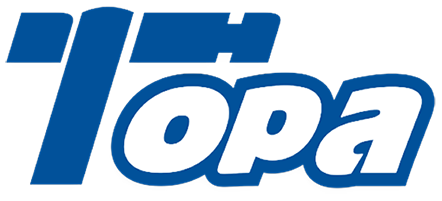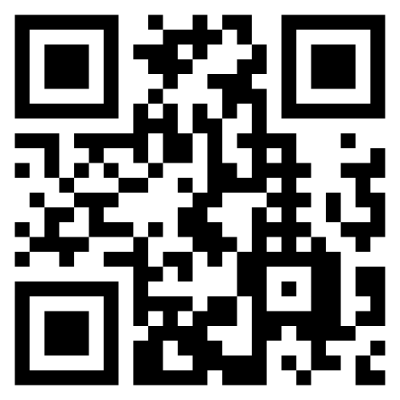What Does SAE Stand for in Hydraulic Fittings?
Introduction
Understanding the intricacies of hydraulic fittings is crucial for professionals in the field, and one term that often pops up is ‘SAE.’ This acronym, short for the Society of Automotive Engineers, plays a pivotal role in standardizing these crucial components. In this comprehensive guide, we’ll delve into what SAE stands for in the context of hydraulic fittings, its significance, and how it shapes the choices professionals make every day.
Brief History
Foundation and Purpose: The Society of Automotive Engineers was established in the early 20th century, primarily to provide a platform for the exchange of ideas among automotive engineers. Initially focused on the automotive sector, SAE expanded its scope over time to include aerospace and commercial vehicles.
Role in Standardization: SAE became instrumental in standardizing components and systems within the automotive industry. This role was crucial during the rapid development and expansion of the automotive and aerospace industries in the 20th century.
Description of SAE Standards Specific to Hydraulic Fittings:
SAE stands for the Society of Automotive Engineers. This organization is known for developing technical standards for various aspects of automotive and related industries.
SAE standards for hydraulic fittings are comprehensive guidelines that outline specifications for design, performance, and dimensions. These standards ensure compatibility and safety across different hydraulic systems.
Notably, SAE standards cover aspects such as thread size and type, fitting configuration, pressure ratings, and material specifications. This is crucial for ensuring the fittings can withstand the operational demands in various environments.
Comparison with Other Standards (like ISO):
ISO, or the International Organization for Standardization, is another key body that sets global industry standards, including those for hydraulic systems.
While SAE is predominantly followed in North America, ISO standards have a wider international acceptance. This means that products conforming to ISO standards are generally suitable for global markets.
SAE and ISO standards may differ in terms of thread types, sizes, and pressure ratings. For instance, SAE standards often use imperial measurements, while ISO standards typically use metric.
In terms of hydraulic fittings, an engineer or technician must ensure that the selected fittings comply with the specific standards required for their application, whether SAE, ISO, or others.
Types of SAE Standard Fittings
JIC Fittings
Overview: JIC (Joint Industry Council) fittings, often associated with SAE standards, are widely used in hydraulic systems. They have a 37-degree flare seating surface.
Specifications: These fittings are typically made of carbon steel and are used in applications where high pressure is a factor. Sizes range from 1/16 to 3 inches.
Applications: Common in mobile hydraulics and in the aerospace sector. They are suitable for high-vibration environments due to the metal-to-metal contact and are often used in fuel and oil
O-Ring Face Seal (ORFS) Fittings
Overview: ORFS fittings provide a good seal and resistance to over-torque. They have a straight thread and a flat face with an O-ring groove.
Specifications: Available in sizes from about ¼ inch to 2 inches, ORFS fittings are usually made from stainless steel or carbon steel.
Applications: Widely used in higher pressure applications and where vibration resistance is needed. Common in construction equipment and automotive applications.
SAE Straight Thread O-Ring Fittings
Overview: These are also known as O-Ring Boss (ORB) fittings, featuring a straight thread and an O-ring.
Specifications: They are characterized by their robust sealing and are made of materials like steel and stainless steel. Sizes vary from 1/8 inch to 2 inches.
Applications: Ideal for medium to high-pressure applications, including agriculture, automotive, and industrial hydraulics.
NPT Pipe Fittings
Overview: National Pipe Thread (NPT) fittings are one of the oldest types of hydraulic fittings and conform to SAE standards.
Specifications: They have tapered threads for sealing and holding. Sizes can range from 1/16 inch to 3 inches.
Applications: Used in a variety of applications, including lower pressure and general-purpose hydraulics. Not recommended for high vibration or impulse applications due to potential for leaks.
Flange Fittings
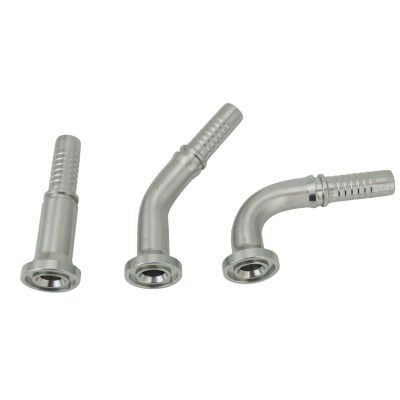
Overview: Flange fittings in hydraulic systems are used for connecting larger pipes or hoses, typically in high-pressure applications.
Specifications: These come in two main types – split flange or captive (one-piece) flange. Sizes range significantly to accommodate larger hoses and pipes.
Applications: Commonly found in industrial and marine applications, especially where high-pressure, large diameter hoses are required.
SAE 45-degree Fitting
Overview:The SAE 45-degree fitting, often referred to in the context of hydraulic and pneumatic systems, is a type of fitting used to connect hoses and pipes in these systems. Here is a detailed overview:
Angle: As the name suggests, the SAE 45-degree fitting features a 45-degree angle, which is essential for routing hoses or pipes in systems where space is limited or where a straight or 90-degree fitting would be impractical.
Design Standards: These fittings conform to SAE (Society of Automotive Engineers) standards, which dictate their dimensions, threading, and other crucial specifications to ensure compatibility and safety in automotive and industrial applications.
Banjo Fittings
Overview: Unique for their hollow bolt and ring shape, banjo fittings are used in hydraulic systems to allow for flexible piping.
Specifications: They come in various sizes and are often made of steel, stainless steel, or brass.
Applications: Predominantly used in automotive applications, such as fuel, oil, and brake lines, due to their compact design and efficiency.
DIN Fittings (Deutsches Institut für Normung)
Overview: Although not strictly SAE, DIN fittings are mentioned for comparison as they are another standard commonly used in hydraulics.
Specifications: DIN fittings follow German standards and are known for their metric dimensions and heavy-duty applications.
Applications: Widely used in European equipment and in applications requiring robust, high-pressure fittings.
SAE Standards and Their Importance
In-depth Discussion on Why SAE Standards are Crucial
Uniformity and Interchangeability: SAE standards create a uniform framework for the design, manufacture, and testing of hydraulic fittings. This standardization ensures interchangeability across different brands and systems, a critical factor in the maintenance and repair of hydraulic systems.
Safety and Reliability: Adhering to SAE standards helps in ensuring the safety and reliability of hydraulic systems. These standards are developed considering the operational pressures, temperatures, and other critical factors that hydraulic systems encounter, thus ensuring that the components can withstand these conditions without failure.
Compatibility Across Systems: SAE standards facilitate compatibility across various hydraulic systems. This is particularly vital in complex machinery where components from different manufacturers are used. It ensures that these components work seamlessly together, reducing the risk of malfunctions or system failures.
Quality Assurance: Implementing SAE standards is synonymous with a commitment to quality. Manufacturers who adhere to these standards are seen as providers of high-quality products, which helps in building customer trust and industry reputation.
International Recognition: While SAE is an American organization, its standards are recognized and followed globally. This worldwide acceptance makes SAE standards a benchmark for quality and reliability in the international market.
Innovation and Continuous Improvement: SAE standards are not static; they evolve with advancements in technology and industry practices. This encourages continuous improvement and innovation in the design and production of hydraulic fittings.
Benefits of Using SAE Standardized Fittings in Hydraulic Systems
Ease of Procurement and Replacement: Standardized fittings simplify the procurement process. Maintenance teams can easily source replacements without worrying about compatibility issues.
Reduced Downtime: In industrial settings, downtime due to component failure or incompatibility can be costly. SAE standardized fittings reduce the likelihood of such issues, ensuring smoother operations.
Cost-Effectiveness: Standardization often leads to reduced costs. With common design and manufacturing processes, the production costs of fittings are lowered, benefiting both manufacturers and end-users.
Enhanced System Performance: Systems that use standardized fittings are generally more efficient and reliable. This ensures optimal performance and longevity of the hydraulic system.
Global Compliance: For businesses operating in multiple countries, using SAE standardized fittings means compliance with global industry standards, facilitating easier expansion and operation in international markets.
Facilitation of Technological Advancements: As SAE standards evolve, they encourage the integration of new technologies and materials in hydraulic fitting design, leading to more advanced and efficient systems.
Choosing the Right SAE Fittings
Guidelines on Selecting Appropriate SAE Fittings
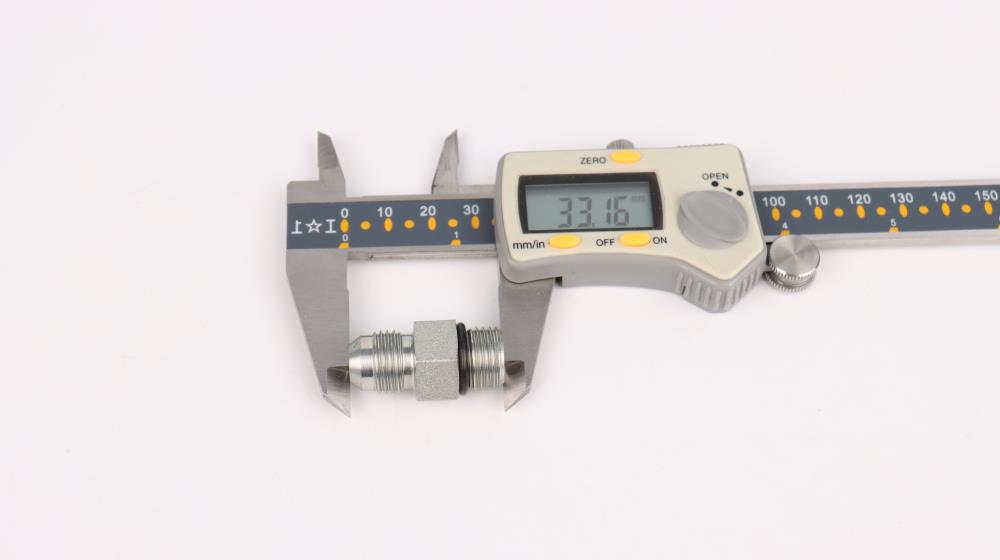
Understand the Application Requirements: Assess the specific needs of your hydraulic system, including pressure ratings, fluid compatibility, temperature range, and environmental conditions.
Identify the Correct Size and Type: Ensure that the fitting size matches the hydraulic hose or tubing. Incorrect sizing can lead to leaks or system failures. The type of fitting (e.g., JIC, ORFS, NPT) should be selected based on the application’s specific requirements.
Check Compatibility with Fluids: Different hydraulic fluids may require different materials for fittings. Verify compatibility to avoid corrosion or degradation of the fittings.
Consider Pressure Ratings: Fittings should be chosen based on their ability to withstand the operating pressure of the hydraulic system. Exceeding the pressure rating can result in dangerous situations.
Evaluate Environmental Conditions: If the fittings are to be used in harsh environments (like high temperatures, corrosive substances, or heavy vibrations), choose fittings that are designed to withstand these conditions.
Benefits of Using SAE Standardized Fittings in Hydraulic Systems
Ease of Procurement and Replacement: Standardized fittings simplify the procurement process. Maintenance teams can easily source replacements without worrying about compatibility issues.
Reduced Downtime: In industrial settings, downtime due to component failure or incompatibility can be costly. SAE standardized fittings reduce the likelihood of such issues, ensuring smoother operations.
Cost-Effectiveness: Standardization often leads to reduced costs. With common design and manufacturing processes, the production costs of fittings are lowered, benefiting both manufacturers and end-users.
Enhanced System Performance: Systems that use standardized fittings are generally more efficient and reliable. This ensures optimal performance and longevity of the hydraulic system.
Global Compliance: For businesses operating in multiple countries, using SAE standardized fittings means compliance with global industry standards, facilitating easier expansion and operation in international markets.
Facilitation of Technological Advancements: As SAE standards evolve, they encourage the integration of new technologies and materials in hydraulic fitting design, leading to more advanced and efficient systems.
Common Mistakes to Avoid in Selection
Ignoring Compatibility Issues: Using fittings not compatible with the fluid type or material can cause leaks and reduce the lifespan of the system.
Overlooking Pressure Ratings: Fittings with lower pressure ratings than the system’s requirements can lead to failures under pressure.
Incorrect Sizing: Mismatched sizes can lead to improper sealing and leaks. Always double-check the sizing for accuracy.
Neglecting Quality for Price: Opting for cheaper, lower-quality fittings can result in frequent replacements and increased downtime.
Over-tightening: This common mistake can strip threads or crack fittings, leading to leaks and failures.
Tips from Industry Experts
Consult Technical Specifications: Always refer to the manufacturer’s technical specifications for guidance on the proper use and limitations of each fitting.
Regular Maintenance Checks: Regularly inspect fittings for signs of wear, corrosion, or damage. This can prevent system failures.
Training and Expertise: Ensure that personnel handling the hydraulic systems are trained in fitting selection and installation.
Stay Updated on Standards: Keep abreast of any updates or changes in SAE standards, as these could affect fitting selection and compatibility.
Seek Professional Advice: When in doubt, consult with a hydraulic systems expert or the fitting manufacturer for advice on the best fitting for a specific application.
Installation and Maintenance of SAE Fittings
Best Practices for Installing SAE Hydraulic Fittings
Proper Preparation: Before installation, clean all threads and surfaces. Remove any debris or contaminants that could affect the fitting’s performance.
Correct Tools and Techniques: Use the right tools for tightening fittings to avoid damage. Follow the manufacturer’s torque specifications precisely.
Inspect Before Installation: Check for any defects or damages in the fittings. A damaged fitting can compromise the entire hydraulic system.
Alignment and Connection: Ensure proper alignment when connecting fittings. Misalignment can cause undue stress and lead to leaks or fitting failure.
Thread Engagement: Proper thread engagement is crucial. Follow the rule of thumb for the number of turns or use a thread gauge for precision.
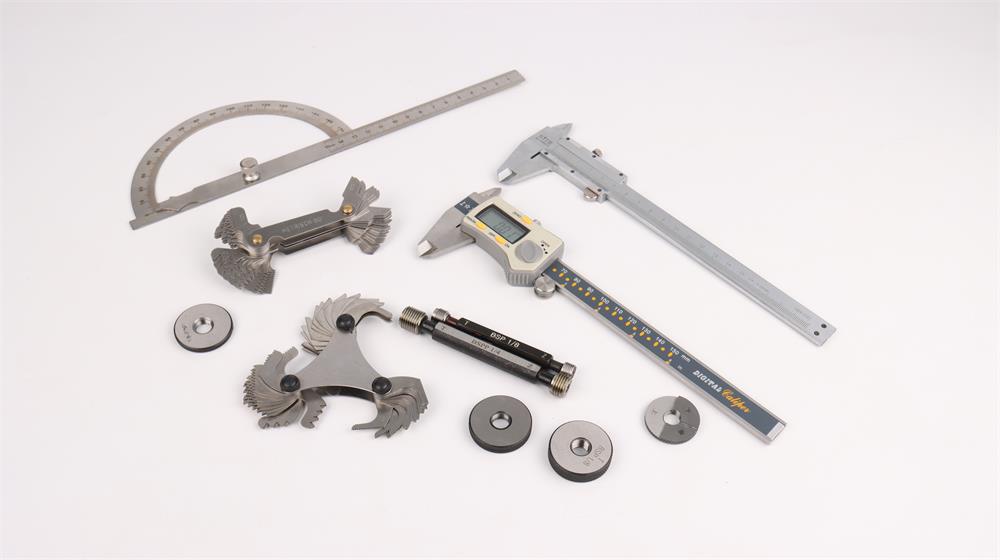
Avoid Over-tightening: This can strip threads or fracture fittings. Use a torque wrench to apply the correct amount of force.
Sealing and Testing: After installation, ensure all connections are sealed properly. Conduct a pressure test to check for leaks.
Maintenance Tips to Ensure Longevity and Efficiency
Regular Inspections: Routinely inspect fittings for signs of wear, corrosion, or damage. Early detection of issues can prevent system failures.
Cleanliness: Keep the fittings and surrounding areas clean. Contamination is a leading cause of hydraulic system failure.
Lubrication: Apply suitable lubricants to the fittings as necessary, especially in areas prone to corrosion or high wear.
Tightening Schedule: Periodically check and retighten fittings as necessary, especially in systems experiencing vibration or thermal cycling.
Record Keeping: Maintain records of maintenance schedules, replacements, and any issues encountered. This can help in troubleshooting and future maintenance planning.
Environment Monitoring: Keep an eye on the environment where the hydraulic system operates. Changes in temperature, humidity, or exposure to corrosive substances can affect the fittings.
Troubleshooting Common Issues with SAE Fittings
Leaks: If a leak is detected, first identify its source. Tighten the fitting if it’s loose, but be cautious not to over-tighten. Replace the fitting if it’s damaged or worn out.
Thread Damage: Inspect threads for signs of stripping or cross-threading. Replace fittings with damaged threads to prevent leaks and ensure a secure connection.
Corrosion: Look for rust or corrosion, particularly in harsh environments. Use corrosion-resistant fittings or apply protective coatings if necessary.
Vibration-Induced Loosening: In systems with high vibration, check for loosening of fittings. Use locking mechanisms or thread sealants as preventive measures.
Temperature Fluctuations: Sudden temperature changes can affect fitting integrity. Use fittings rated for the operating temperature range and monitor for thermal expansion issues.
Conclusion
In conclusion, SAE (Society of Automotive Engineers) hydraulic fittings play a pivotal role in hydraulic and pneumatic systems across various industries. Understanding the nuances of these fittings, from their types and specifications to installation and maintenance, is essential for ensuring efficient, safe, and reliable operations. Adherence to SAE standards guarantees compatibility and consistency, making these fittings a preferred choice for professionals in the field. Whether it’s selecting the right fitting for a specific application, installing them correctly, or troubleshooting common issues, a deep knowledge of SAE fittings is invaluable.

